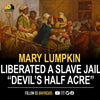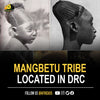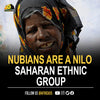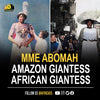The Maasai, or Wamasai in Swahili, are an ethnic group of Nilotic people who live in northern, central, and southern Kenya as well as northern Tanzania. They are well-known around the world because they live near the many game parks of the African Great Lakes and have their own customs and ways of dressing. The Maasai speak the Maa language, which is called l Maa. It is related to the Dinka, Kalenjin, and Nuer languages and is part of the Nilotic language family. Most Maasai people speak English and Swahili, which are the official languages of Kenya and Tanzania.
Some older people who live in rural areas don’t speak either of these languages.In the 2019 Kenyan census, there were 1,189,522 Maasai people, compared to 377,089 in the 1989 census. However, many Maasai see the census as the government meddling in their lives and refuse to take part or give false information. Many Maasai tribes in Tanzania and Kenya charge a fee for people to visit their villages and learn about their culture, traditions, and way of life.
The Maasai live in the area around the African Great Lakes. They came from the South Sudan. Most people who speak Nilotic in the area, like the Maasai, the Turkana, and the Kalenjin, are herders. They are known for being fierce warriors and cattle thieves. The Maasai and other groups in East Africa have taken on customs and practices from nearby Cushitic-speaking groups. These include the age set system of social organization, circumcision, and vocabulary words.Many ethnic groups who had already settled in the area were forced to leave when the Maasai came. Other groups, mostly Southern Cushitic ones, were absorbed into Maasai society. The Nilotic people who were the ancestors of the Kalenjin also took in some early Cushitic people.
Around the middle of the 19th century, the Maasai territory was at its largest. It included almost all of the Great Rift Valley and the land around it, from Mount Marsabit in the north to Dodoma in the south. At this time, the Maasai, along with the rest of the Nilotic people, raised cattle as far east as Tanganyika’s Tanga coast (now mainland Tanzania). Raiders had spears and shields, but people were most afraid of their throwing clubs (orinka), which could hit their target from up to 70 yards away (approx. 100 metres). In 1852, it was said that 800 Maasai warriors were on the move in the area that is now Kenya. In 1857, Maasai warriors threatened Mombasa, which is on the coast of Kenya. This was after they had killed everyone in the “Wakuafi wilderness” in what is now southeastern Kenya.
The Maasai worship only one god, who they call Enkai or Engai. Engai has two sides: Engai Narok (the “Black God”) is kind, and Engai Na-nyokie (the “Red God”) is angry. Maasai society is also based on two pillars or totems: Oodo Mongi, or the Red Cow, and Orok Kiteng, or the Black Cow, each of which has five clans or family trees. The lion is the Maasai people’s totem animal, but the animal can be killed. Since the lion is used in the rite of passage ceremony, the Maasai kill it in a different way than trophy hunters do.
Ol Doinyo Lengai, also known as the “Mountain of God,” is in the northern part of Tanzania and can be seen from Lake Natron in the southern part of Kenya. The laibon is the most important person in the Maasai religion. His or her jobs include shamanistic healing, divination, prophecy, and making sure that wars go well or that there is enough rain. Due to the rise of leaders, they now also play a role in politics. Any power a laibon had came from who they were as a person, not their position. A lot of Maasai have also become Christians or Muslims. The Maasai are known for their beautiful jewelry, which they have been selling to tourists as a business for decades.








